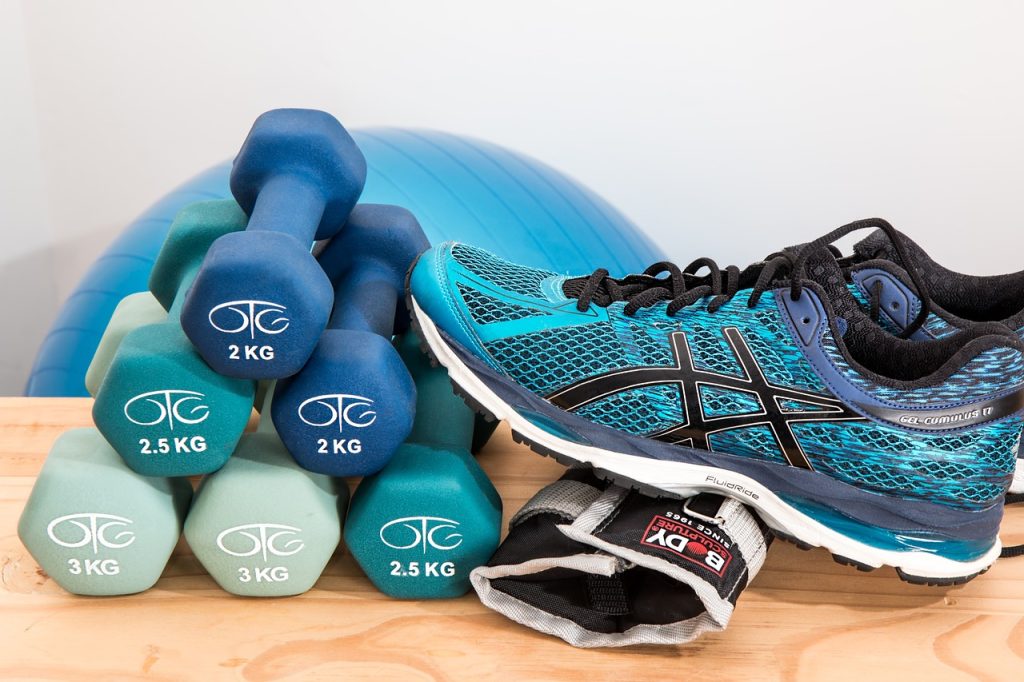If you’ve ever wondered how to avoid lower back pain while building those coveted six pack abs, you’re not alone. It’s a common concern for many people striving to strengthen their core muscles. In this article, we’ll explore some practical tips and techniques to help you prevent any discomfort in your lower back while working on your abs. Whether you’re a fitness enthusiast or just starting your journey towards a stronger midsection, these strategies will provide valuable guidance to keep you pain-free and on track towards your fitness goals.
Understanding the Importance of Core Strength
The role of core muscles in stabilizing the spine
Having a strong core is essential for maintaining a healthy spine and preventing lower back pain. The core muscles include not only the abdominal muscles but also the muscles in the back, pelvis, and hips. These muscles work together to provide stability and support to the spine, allowing for proper movement and alignment.
When you have strong core muscles, they act as a natural corset to support your spine and maintain good posture. This is crucial in preventing the excessive strain and pressure on the lower back that can lead to pain and discomfort. Strengthening your core is not just about getting a six-pack; it’s about ensuring the overall health and well-being of your back.
How weak core muscles can lead to lower back pain
If your core muscles are weak, it can lead to imbalances in the muscles surrounding your spine, putting extra pressure on the lower back. This can cause the vertebrae to be misaligned, leading to pain and discomfort.
Weak core muscles also mean that the other muscles surrounding the spine have to compensate for the lack of stability, leading to overuse and strain. This can result in not only lower back pain but also pain and discomfort in other areas of the body, such as the hips, pelvis, and even the neck.
It’s important to understand that a strong core is not just about aesthetics; it’s about ensuring that your body functions properly and minimizing the risk of injury and pain.
Proper Form and Technique
Maintaining proper posture during ab exercises
When performing ab exercises, it’s crucial to maintain proper posture to protect your lower back. Keep your spine in a neutral position, avoiding excessive arching or rounding of the back. Engage your core muscles by drawing your belly button towards your spine, and avoid straining the neck or shoulders.
One helpful tip is to imagine a string pulling your head towards the ceiling, which helps to maintain a straight and aligned spine. Being mindful of your posture during ab exercises will not only reduce the risk of lower back pain but also ensure that you are effectively targeting your core muscles.
Avoiding excessive strain on the lower back
While working on your abs, it’s important to avoid exercises that place excessive strain on the lower back. This includes exercises such as full sit-ups or leg raises that require you to lift your legs off the ground while lying flat on your back. These movements can put excessive pressure on the lower back and increase the risk of injury.
Instead, opt for exercises that target the core without putting unnecessary stress on the lower back. Planks and modified crunches are great alternatives that effectively engage the core muscles while minimizing strain on the lower back.
Engaging the core muscles effectively
To effectively engage your core muscles during ab exercises, it’s important to focus on the mind-muscle connection. Visualize your core muscles contracting and actively engage them throughout the movement.
When performing exercises like crunches or planks, make sure to breathe properly and activate the core with each exhale. By consciously engaging the core muscles, you’ll not only strengthen them but also improve your overall stability and alignment.

Choosing the Right Exercises
Avoiding exercises that place excessive stress on the lower back
When selecting exercises to target your core, it’s important to choose options that do not put excessive stress on the lower back. As mentioned earlier, traditional sit-ups and leg raises can be particularly problematic for the lower back.
Instead, consider exercises that focus on stability and balance, such as planks, side planks, or bird dogs. These exercises help strengthen the core muscles while minimizing the strain on the lower back.
Alternatives to traditional ab exercises
If you find traditional ab exercises uncomfortable or too challenging for your lower back, there are plenty of alternatives that can still help strengthen your core. Exercises like standing oblique twists, Russian twists, or bicycle crunches can be effective in targeting the abdominal muscles without placing too much stress on the lower back.
Additionally, incorporating exercises that target the muscles surrounding the core, such as hip bridges or supermans, can also contribute to a stronger core and overall stability.
Incorporating exercises that target the entire core
While the rectus abdominis, or “six-pack” muscles, are often the focus when it comes to ab exercises, it’s important to remember that the core is composed of numerous muscles. To build a strong and supportive core, it’s essential to incorporate exercises that target all aspects of the core.
Exercises like the plank variations, mountain climbers, or woodchoppers can engage not only the rectus abdominis but also the obliques, transverse abdominis, and deeper core muscles. By targeting the entire core, you’ll improve overall stability and reduce the risk of lower back pain.
Gradual Progression and Building Core Strength
Starting with basic exercises and gradually increasing intensity
When it comes to building core strength, it’s important to start with basic exercises and gradually increase intensity over time. Just like any other muscle group, the core muscles need time to adapt and strengthen.
Begin with exercises that you can comfortably perform with proper form and technique. Focus on mastering the basics, such as planks or modified crunches, before progressing to more challenging variations.
The importance of slowly progressing to more challenging exercises
As you gain strength and stability, you can gradually progress to more challenging exercises to continue building your core strength. This could include incorporating exercises like side planks with leg lifts, Russian twists with weights, or advanced variations of plank exercises.
But remember, it’s crucial to listen to your body and only progress when you feel ready. Rushing into advanced exercises too quickly can increase the risk of injury or strain on the lower back.
Building overall core strength to support the spine
While it’s important to target the muscles specifically in the core, it’s equally vital to build overall core strength to support the spine. This includes working on the muscles in the back, hips, and pelvis.
Exercises like bridges, supermans, or clamshells that target the posterior chain can help strengthen the muscles that support the spine. By developing a well-rounded core strength, you’ll enhance stability and reduce the likelihood of lower back pain.

Maintaining Flexibility and Mobility
Stretching exercises for the lower back and core muscles
In addition to strengthening the core, it’s crucial to maintain flexibility in the lower back and core muscles to prevent imbalances and reduce the risk of lower back pain. Incorporate stretching exercises that target the lower back, such as gentle backbends or child’s pose.
Stretching the core muscles, including the hip flexors, hamstrings, and glutes, can also improve the overall flexibility and mobility of the lower back. Exercises like cat-cow stretches or kneeling hip flexor stretches are great options to incorporate into your routine.
Incorporating mobility exercises into your workout routine
In addition to stretching, it’s important to incorporate mobility exercises into your workout routine. These exercises help improve joint range of motion and ensure that your movements are fluid and efficient.
Exercises like dynamic twists, torso rotations, or standing side bends can help improve the mobility of the spine and core muscles. By maintaining proper mobility, you’ll reduce the risk of muscle imbalances and enhance the overall health of your back.
Avoiding excessive tightness and muscle imbalances
When it comes to core strength and lower back health, it’s essential to avoid excessive tightness and muscle imbalances. Tight muscles in the hips or hamstrings can adversely affect the alignment and stability of the lower back.
Incorporating regular stretching and mobility exercises into your routine can help prevent muscle imbalances and promote a healthy range of motion. It’s also worth considering activities like yoga or Pilates, which emphasize flexibility and balance, as they can be beneficial for maintaining overall core health.
Using Proper Equipment
Choosing a supportive fitness mat or pad
When performing ab exercises or any exercise that engages the core, it’s important to have a supportive surface to protect your lower back. Investing in a fitness mat or pad that provides adequate cushioning and support is crucial to reduce the pressure on the spine.
Look for mats that have good grip and are thick enough to provide cushioning for your back without being too soft. This will ensure that you can perform exercises comfortably and maintain proper form without straining the lower back.
Using stability balls or other props for added support
Incorporating stability balls or other props into your core exercises can provide added support and stability. These tools can help engage the core muscles more effectively and reduce the strain on the lower back.
For example, performing exercises like planks or bridges with your feet on a stability ball can increase the activation of the core muscles while minimizing stress on the lower back. However, it’s important to ensure proper form and technique when using these props to avoid any unnecessary strain.
Avoiding equipment that may exacerbate lower back pain
While using equipment can be beneficial for core exercises, it’s crucial to be mindful of equipment that may exacerbate lower back pain. Avoid exercises or equipment that put excessive pressure on the spine, such as certain types of ab machines or heavy weights that require excessive bending or twisting of the lower back.
Always prioritize your comfort and listen to your body. If you experience any pain or discomfort while using specific equipment, it’s best to consult with a fitness professional or physical therapist for guidance on alternatives or modifications.

Warming Up and Cooling Down
Importance of warming up the muscles before exercising
Warm-up exercises are essential before engaging in any physical activity, including core exercises. Warming up prepares your muscles and joints for the upcoming workout, increasing blood flow and flexibility.
A proper warm-up routine for core exercises can include dynamic movements such as side bends, hip circles, or torso twists. These exercises help increase mobility in the spine and activate the muscles of the core, preparing them for the upcoming workout.
Dynamic stretches for the core and lower back
Incorporating dynamic stretches specific to the core and lower back can further enhance the warm-up routine. Dynamic stretches involve controlled movements that engage the muscles while simultaneously stretching them.
Dynamic stretches for the core and lower back can include exercises like standing side bends, kneeling hip circles, or cat-cow stretches. These movements help improve range of motion, enhance flexibility, and activate the core muscles before exercise.
Cooling down exercises to release tension in the muscles
After completing your core workout, it’s essential to cool down and stretch the muscles to release tension and promote relaxation. Cooling down exercises help prevent muscle soreness and stiffness, allowing your body to recover more efficiently.
Incorporate static stretches for the core and lower back into your cool-down routine. This can involve exercises like seated forward folds, spinal twists, or child’s pose. Hold each stretch for approximately 20-30 seconds and focus on deep breathing to promote relaxation.
Listening to Your Body
Recognizing signs of overexertion or strain
Listening to your body is crucial when it comes to core exercises and preventing lower back pain. Pay attention to the signals your body sends, such as fatigue, pain, or discomfort, and adjust your exercise intensity accordingly.
If you experience sharp or persistent pain during or after core exercises, it’s important to stop and consult with a healthcare professional. Pushing through pain can worsen the condition and lead to further injury.
Taking breaks when needed and allowing for proper recovery
Taking breaks during workouts and allowing for proper recovery is essential for preventing overexertion and promoting overall health. Overtraining can lead to muscle imbalances, increased risk of injury, and chronic pain, including lower back pain.
Incorporate rest days into your workout routine, giving your muscles time to recover and rebuild. This will ensure that your core muscles and lower back are adequately protected and have time to adapt to the demands of exercise.
Adjusting intensity and technique based on individual limitations
Each individual is unique, and it’s important to adjust the intensity and technique of core exercises based on your individual limitations. This includes considering factors such as age, fitness level, previous injuries, or existing conditions.
Be mindful of your body’s limitations and modify exercises as needed. For example, if you have a history of lower back pain, you may opt for lower impact exercises or use props for added support. Always prioritize your safety and consult with a healthcare professional if you have any concerns or questions.

Seeking Professional Guidance
Consulting with a fitness professional or physical therapist
For personalized guidance on building core strength and preventing lower back pain, it can be beneficial to consult with a fitness professional or physical therapist. These experts can assess your individual needs and provide tailored advice and exercises.
A fitness professional can guide you in developing a comprehensive core workout routine, ensuring that you are targeting all aspects of the core while minimizing the risk of lower back pain. They can also provide valuable feedback on form and technique to prevent injury.
Getting a personalized assessment of your core strength
Understanding your current level of core strength is essential for designing an effective workout routine. A fitness professional or physical therapist can conduct a personalized assessment to evaluate your core strength and identify any weaknesses or imbalances.
Through tests and measurements, they can determine your ability to engage the core muscles properly and provide recommendations for specific exercises to address your individual needs. This assessment will help you optimize your core training and minimize the risk of lower back pain.
Receiving guidance on appropriate exercises for your condition
If you have a pre-existing medical condition or history of lower back pain, it’s important to seek guidance on appropriate exercises. A fitness professional or physical therapist can provide recommendations for exercises that are safe and beneficial for your condition.
They can help you modify exercises to accommodate any limitations or restrictions, ensuring that your core training is both effective and safe. By working with a professional, you can prevent further injury and manage your condition while still building core strength.
Implementing Lifestyle Changes
Maintaining a healthy weight to reduce strain on the lower back
Maintaining a healthy weight is crucial for reducing strain on the lower back and supporting overall core strength. Excess weight can increase the load on the spine, leading to added stress and potential pain.
Incorporate a balanced diet and regular physical activity into your lifestyle to achieve and maintain a healthy weight. This will not only reduce the strain on your lower back but also contribute to improved overall health and well-being.
Improving posture and ergonomics in daily activities
Posture plays a significant role in core strength and lower back health. Poor posture can lead to muscle imbalances and increased strain on the spine.
Pay attention to your posture during daily activities, such as sitting and standing. Practice proper alignment by keeping your shoulders back and down, engaging your core, and maintaining a neutral spine. Ergonomic adjustments, such as using a supportive chair or standing desk, can also promote better posture and reduce the risk of lower back pain.
Incorporating regular movement and avoiding prolonged sitting
Sedentary lifestyles and prolonged sitting can contribute to lower back pain and weak core muscles. It’s important to incorporate regular movement and avoid prolonged periods of sitting.
Take breaks throughout the day to stretch, walk, or engage in light physical activity. This helps promote blood flow, maintain flexibility, and prevent muscle imbalances. Consider incorporating exercises or stretching routines specifically designed for sedentary individuals to counteract the negative effects of prolonged sitting.
By implementing these lifestyle changes, you can support the health of your core muscles and reduce the risk of lower back pain. Remember that consistency is key, and even small adjustments can have a significant impact on your overall core strength and well-being.
In conclusion, understanding the importance of core strength is crucial for preventing lower back pain and maintaining a healthy spine. By practicing proper form and technique, choosing the right exercises, gradually building core strength, maintaining flexibility and mobility, using proper equipment, warming up and cooling down, listening to your body, seeking professional guidance when needed, and implementing lifestyle changes, you can effectively strengthen your core and reduce the risk of lower back pain. Remember to prioritize your health and safety, and consult with a healthcare professional if you have any concerns or questions. With dedication and consistency, you can build a strong and supportive core that benefits not only your physical appearance but also your overall well-being.





